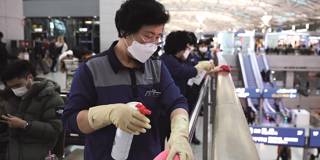The COVID-19 pandemic is an unprecedented challenge that underscores both the fundamental value of health and the importance of well-functioning and resilient universal health coverage. South Korea’s success in building such a system should encourage today's lower-income countries to make a similar commitment.
SEOUL – The COVID-19 pandemic has exposed inequalities and weaknesses in health systems both within and across countries. Most countries initially responded poorly to the crisis, and suffered heavy human and economic losses. But some in East Asia – including South Korea – performed relatively well. In fact, South Korea’s decades of efforts to build a resilient universal health-care system provide a model for today’s developing countries to follow.

SEOUL – The COVID-19 pandemic has exposed inequalities and weaknesses in health systems both within and across countries. Most countries initially responded poorly to the crisis, and suffered heavy human and economic losses. But some in East Asia – including South Korea – performed relatively well. In fact, South Korea’s decades of efforts to build a resilient universal health-care system provide a model for today’s developing countries to follow.